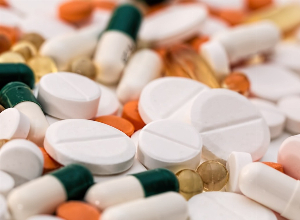Raynaud's phenomenon (disease): causes, symptoms and treatments
Published 6 Mar 2023 • By Candice Salomé
Raynaud's disease (also known as Raynaud's phenomenon, or Raynaud's syndrome) is characterised by episodes of reduced blood flow in the extremities, most commonly in the fingers.
It is a chronic blood circulation disorder, which occurs periodically when exposed to cold, but also, more rarely, when under emotional stress.
So what is Raynaud's disease? What causes it? How can it be treated?
We explain it all in our article!

Raynaud's disease: what is it?
Raynaud's disease and Raynaud's syndrome, which are two slightly different conditions, are not just about having cold hands and/or feet.
In fact, it is a chronic blood circulation disorder in the extremities, mainly in the fingers, more rarely in the toes, and sometimes in the nose and ears.
It is a vasomotor disorder which is caused by the temporary contraction of blood vessels (known as vasoconstriction) and which deprives the extremities of their usual supply in blood and oxygen. This abnormal, sudden, but temporary cessation of arterial circulation is responsible for the onset of symptoms associated with Raynaud's disease.
The affected extremities - the fingers and, more rarely, the toes - suddenly become white, cold and numb because the blood flow stops. Other parts of the body may also be affected, such as nose, lips, earlobes or nipples.
People suffering with Raynaud's phenomenon experience numerous "attacks", most often due to exposure to cold.
An attack generally consists of three phases:
The ischemic phase (also called the white phase)
The fingers become white and cold, and lose their sensitivity. This usually lasts a few minutes. In some cases, the attack is limited to this first phase and the blood flow returns to normal immediately afterwards.
The deoxygenation phase (also called the blue phase)
During this phase, the fingers turn blue and the person feels a tingling sensation which may sometimes be painful. This is called dysesthesia. This second phase also lasts a few minutes.
The reperfusion phase (also called the red phase)
The fingers become warm, swollen, red and sensitive, and may even hurt. They then return to their normal appearance within a few minutes.
What causes Raynaud's disease?
Primary Raynaud's
In 90% of cases, Raynaud's phenomenon is idiopathic, i.e. of unknown origin. This condition is called Raynaud's disease.
Raynaud's disease most often occurs in adolescents or in young, healthy women. Raynaud's disease affects 6% of women between the ages of 25 and 40 (75% to 90% of Raynaud's disease cases are women). In about 2/3 of all cases, the disease resolves itself after a few years.
The attacks are triggered by exposure to cold or in reaction to a strong emotion. Between the attacks, the patient's fingers have a normal aspect, without ulceration or scarring.
Raynaud's disease is not a life-threatening condition, but it has a significant impact on the quality of life of patients.
Secondary Raynaud's
In other patients Raynaud's phenomenon, also called Raynaud's syndrome (10% of cases), is secondary, i.e. linked to another condition, or comes from an identified cause.
For these patients, Raynaud's syndrome occurs later (after the age of 40) and the attacks start spontaneously without any triggers. The symptoms often affect only one hand and small ulcers may appear on the fingers.
Raynaud's syndrome can be caused by certain medications. Therefore, doctors always look for this cause and, if possible, suggest that the medication that provokes the syndrome is stopped. This is often enough to eliminate the symptoms.
Certain autoimmune or arterial diseases may be involved in Raynaud's syndrome (scleroderma, Sharp's disease, Gougerot-Sjögren's syndrome, lupus, etc.).
Finally, Raynaud's syndrome can also develop at work, if the hands and arms of a person are subject to repeated vibrations or shocks.
How can Raynaud's disease be treated?
For the primary form, which has no known cause, there is usually only a list precautions to follow in order to avoid the onset of symptoms, and little medical follow-up is necessary.
However, when Raynaud's disease is due to another condition (secondary form, or Raynaud's syndrome) and when the symptoms become very troublesome for the patient, the doctor may prescribe medication to dilate the blood vessels. These may be calcium channel blockers (e.g. nifedipine) or prostaglandins (e.g. iloprost intravenously).
In secondary forms of scleroderma, bosentan is sometimes prescribed to treat finger ulcers.
How to prevent the symptoms of Raynaud's disease?
Simple everyday measures can reduce the frequency of the attacks. Here are some of them:
- Avoid smoking, as it triggers blood vessel constriction, which in its turn increases the risk of an attack and the intensity and duration of symptoms. You can get help from a healthcare professional if necessary;
- Protect yourself from the cold and wear mittens (rather than gloves) which allow finger mobility,
- When it is very cold, you can use hand-warming packs inside your gloves/mittens. These are available in pharmacies, as well as in hunting and fishing shops and sportswear shops,
- Avoid sudden temperature changes from hot to cold,
- Wear insulating gloves when handling cold food or objects,
- Avoid wearing tight jewellery (rings, bracelets) and shoes that are too tight,
- Caffeine-rich beverages such as coffee, tea, sodas, etc. cause small blood vessels to constrict. Drink them in moderation,
- Check the package leaflet of any medication you are taking to see if Raynaud's is one of the side effects and talk to your doctor about it,
- Exercise regularly to improve blood circulation and lower your stress level.
- Finally, if Raynaud's disease is caused by your working conditions, do not hesitate to discuss it with your occupational therapist. An adjustment of the workstation may be necessary.
Give it a "like" and share your thoughts and questions with the community in the comments below!
Take care!
Comments
You will also like

After a heart attack, it is necessary to resume doing sport or to start doing it
15 May 2018 • 4 comments

PCSK9-inhibitor drugs: A game-changer for individuals with extremely high cholesterol levels
1 Mar 2016

 Facebook
Facebook Twitter
Twitter
